- Home
- Bill Bryson
Icons of England Page 4
Icons of England Read online
Page 4
Less than half a mile from our gate, a favourite walk takes us past an isolated half-timbered house at Clambercrown, which used to be a pub called the Dog. It will long be remembered, I hope, as the title of Brooke’s most admired novel, The Dog at Clambercrown. Brooke, a melancholic and acutely self-conscious individual, found his escape in writing and his love of wild flowers. Nobody has evoked the scenery and atmosphere of that corner of the North Downs better. The miracle is that it has survived largely unscathed.
THE CALL OF THE GROUSE
David Bellamy
on grouse moors
‘GO BACK! GO BACK!’ is the call of Britain’s only endemic bird that thrives along with over sixty million people in the mix of landscapes that Winston Churchill said ‘was worth dying for’. These landscapes were people-made and people-managed long before the internal combustion engine made it easier to plough, sow, reap, mow and fell trees to make room for grazing animals and growing crops to feed people.
The rot set in when Stone Age immigrants discovered what we now call the Lake District and a very useful greenstone. This they quarried, worked and polished to produce axe heads strong and keen enough to fell the ancient forests that then covered most of these isles.
Long before this the post-glacial hunter-gatherers had found hunting no easy matter for the trees got in the way of giving chase. So it was that a mere 5,000 years after the end of the last Ice Age, slash and burn became the principal behind the foundation of our most cherished natural landscapes.
With the development of bronze and iron tools the removal of trees and scrub was easier, and with warmer and wetter weather massive leaching and erosion of soil took their toll. Our uplands suffered worst and soon became covered with acidic moorland and blanketed with peat, devoid of trees and bushes. This created my chosen icon, the ideal habitat for the grouse.
As the little Ice Age began to come to an end in the Nineteenth Century, the rising temperature and the increase in the amount of carbon dioxide and oxides of nitrogen in cycle (both of which are plant fertilisers) boosted the growth of trees, once again threatening the very existence of the open vistas that are the multicoloured backbone of Britain.
Fortunately the grouse moors were already being managed by regular burning to provide a patchwork of different-aged heather stands, food, cover and shelter for the grouse and many other special creatures great and small. I salute the gamekeepers who work their magic come rain or shine to this day, they are practical conservationists without equal.
Red grouse, found naturally only in Britain, are ground dwellers and so are at the mercy of all types of predators from golden eagles to foxes. Thanks to good parenthood, camouflage and take-off prowess they exploited the habitat well until sporting shotguns evolved from the fowling piece, and the sporting gentleman became another predator that joined the pack: complete with a well-trained dog and a loader, he would walk the moor in what was reckoned to be the quintessential art of the hunt.
The main food of this wonderful bird is heather, the young regrowth shoots of which are densely packed and rich in nutrients. The only other input required is a soupçon of daddy-long-legs and there are plenty of them about, along with other creepy crawlies, proving that if the management is good the natural history of one of the world’s rarest ecosystems is not imperilled.
Another moorland crop that creates jobs and cash flow is the product of the heather honey bee, all in tune with the sweetest buzz of biodiversity.
In the blooming pink of high summer there is little to beat the spectacle of a grouse moor. A worthy icon, providing the best of free range cordon pink game while ensuring that there will, still, be the best heather honey for tea.
LET’S TALK ABOUT THE WEATHER
Floella Benjamin
on the English climate
THE FIRST THING I noticed, as the ship neared the end of its four-thousand-mile journey from my homeland of Trinidad, was the insidious chill which penetrated the flimsy party dress I wore for my arrival in the Land of Hope and Glory, England; the land I had been taught in school to love from afar. I stood shivering on the deck of the steamer as it nosed its way into the docks at Southampton on 1 September, 1960. This was my first impression of England, the coldness. My mother, who had travelled ahead to England fifteen months earlier, waited on the dockside with woolly jumpers to cosset her precious children. She had come prepared, for she had learnt the vagaries of the English weather. ‘All the English people seem to talk about is the weather,’ she used to say. Even after fifty years living here, she would still say it and she was right, there was plenty of it to talk about.
As our train sped out of Southampton towards the gaunt, grey buildings of London, I was intoxicated by the greenness of the countryside. Nothing had prepared me for the variety of the constantly changing landscapes which rushed by, and the vision is still etched on my mind. The lush fields flaunting different shades of green, bounded by towering woodland, each tree with its own shade of emerald, already tinged with the early gold of autumn. The rolling hills that bore them reminded me of a green patchwork quilt.
Although Trinidad is covered in evergreen rainforest, laced with colourful tropical flowers, the grassland is mostly singed fawn by the relentless blaze of the sun, only turning pale green during the rainy season when a warm, sensual, rain you can dance in buckets briefly down. This is quite unlike the thin, incessant, icy rain I discovered falling from the dark, brooding English clouds.
As the weeks passed, my siblings and I got used to the cold, which increased as autumn fully claimed the landscape, covering the streets with a dense carpet of golden leaves. Yes, the streets were paved with gold as we had been told, but not the kind of precious gold we had all expected. Winter drew rapidly in and the trees curiously lost their leaves, exposing the branches like skeletons reaching for the sky.
As the frosty air gripped harder, I was fascinated by the smoke that billowed out of my mouth as I exhaled. I thought there was a fire within my chest as I blew the smoke out like a dragon.
Smog, caused by the dense coal smoke that spewed out of the chimneys which looked like soldiers guarding the slated rooftops, crept through the streets, cutting visibility down dramatically. It created a ghostly atmosphere with people moving mysteriously through the sullen grey mist like wraiths in a horror film.
Yes, in my short time in England, I certainly experienced many different types of weather. But the morning I awoke to find my room filled with an eerie clear light and muffled silence is something I will never forget. I rushed to the window and wiped the condensation caused by our paraffin heater from the pane. What I saw thrilled me and took my breath away. A pure whiteness dazzled me and gave me the sensation of being in another world. Everything was covered in a thick fluffy blanket of fresh snow!
I had seen snow on Christmas cards back in Trinidad, but standing there, looking at its clean, white, magical beauty in amazement, my heart soared and, at that moment, I fell in love with snow.
I have lived in Britain now for fifty years and I still find myself sighing with joy as the landscape changes and seasons unfold, each one with its own special character. Spring, its cherry blossom dancing in the breeze with a promise of lazy afternoons of English tea on the lawn. Showery summers mingled with scarce hot, sunny cricket days. Autumn with its blaze of glorious colour slowly unfolding before, once again, winter inexorably clenches its icy fist, and the cycle renews.
Devouring the relentless miles whilst training for my marathons, I am inspired as I absorb the essences of each new season. And in my role as President of the Ramblers’ Association I find inner peace as I walk through England’s mountains green, as goes that great hymn I learnt as a child back in Trinidad.
Yes, to my surprise, I have grown to love the English weather in all its forms, and miss it when I’m away … even the coldness!
SENSES AND SENSIBILITY
Richard Benson
on rural sensuality
ONE BRIGHT BLUE, OVEN-HOT af
ternoon in the summer of 1984, my friend Johnny and I were constructing the top layers of a vast straw stack in a field on the East Yorkshire Wolds. We were eighteen, and working for a local farmer in our last school summer holiday. All our summers were spent in this way, but for some reason I have a clear memory of this particular day, or rather of a particular moment in it.
It came as we finished unloading a trailerful of bales. As the straw stack was close to a windbreak of larch, damson and apple trees, we pulled some apples from the branches and sat on the straw to eat them. They were unripe, bittertasting Bramleys, but eating them up there in the sunshine felt good. We experienced one of those small stretches of serenity that always seem to come over you in the countryside when you are least expecting them. I remember that, instead of insulting each other, or arguing, or talking about pop music, we just sat in happy silence for about a quarter of an hour. It’s hard to explain more than that, except perhaps to say that it was as if in eating the apples we had swallowed part of the glorious afternoon.
When I think now of the fifteen or so minutes we lay on top of the stack, I have a recollection of our surroundings that is disarmingly vivid. The faint wind – warm from the baking Wolds – on my face; the leafy stir of trees around the stack; the slightly sour, earthy odour of barley straw and the virile green scent of summer verges that one almost tastes. Apart from the nursery-blue sky with its infant thunderclouds, though, there is no meaningful visual element to this memory. I think this is telling, and I mention it here because I think it is easy to forget the powerful sensuality of the English countryside and the impression it can make on us.
Fortunately, you do not have to lie on top of a straw stack to experience this. It suffices to simply walk down a green lane, stop and close your eyes for a full minute. Listen, smell, feel, suck the air in, and the place enters into you in a way that it cannot when you merely stand admiring a view. Marvellous vistas are all very well, but looking at them can make you feel separate from the landscape; how often do you hear someone say that a view looks ‘unreal’, or that they ‘cannot take it in’? In contrast, although we may be barely conscious of what our other four senses are registering, it is often via these sensations that we viscerally cognize the countryside when we are in it.
The English landscape has a distinctive ease and quiet luxuriance. It is generally moist, lush and soft, with ample curves and sibilance; its weather does not punish with extremes; our wildlife is pretty, timid and unthreatening. It has its celebrated all-time-classic sensations, such as the smell of fresh hay, the cawing of rooks and the feel of sea spray, but the dearest are likely to be personal.
Those I would take to my boring, dry desert island include the fragrance of peas harvested on a summer evening; the foot-feel of frozen mud ruts under your boots on an early January morning and the keening of an invisible light aircraft, pleasant because it highlights the silence. I might also add the taste of wild fruit – chiefly in memory of that perfect moment from my childhood.
Talking about it years later, Johnny and I agreed that it was probably the first time we became fully aware of the infinite, indifferent splendour of the countryside. This might seem strange, given that we had grown up there, but it isn’t really. Those most familiar with a place can be the slowest to understand it – particularly if they think too much about what it looks like.
STICKING THE WICKET
Scyld Berry
on village cricket
CRICKET FIGURES LARGELY IN the English rural idyll. Not so celebrated is the sport’s role in achieving social cohesion, in preventing the warp and weft of English – and British life from becoming unravelled.
Let me introduce you to T—. It is a large village in the old North Somerset coalfield. The quality of housing stock is pretty ordinary, as you would expect it to be, given its historical background and the inequality of English society through the ages. Romantic-sounding though some names in this part of Somerset can be, there is plenty of roughness and violence.
I was going to continue referring to this place as T—, I still play cricket against them, and I am too far past the age for batting to cope with a bouncer or beamer if one of their fast bowlers wants to take it out on me next season.
But there is nothing here for anyone to be ashamed of or embarrassed about. This village is called Timsbury, and their cricket team has reached a Cup Final at Lord’s, which is more than mine has done.
The playing fields are at the heart of Timsbury, which is where they should be. They are big enough to have two football pitches; in summer, one cricket pitch with generous boundaries. A clubhouse with dressing rooms on the ground floor accommodates the players of both sports, and on the upper level is a bar and space for teas.
After playing against Timsbury a few times over the years, my guess – and not even a fully qualified sociologist could prove anything either way – is that the cricket and football clubs have done a lot for the social cohesion there. Their cricket team is always full of young lads – lads who would have to spend their weekends in other ways if they did not have access to this green open space and, of course, to the adult volunteers who provide them with an infrastructure.
The highest annual homicide rate in England has been achieved – if that is the word – by more than one community in the West Country. Timsbury, I bet, will never be a candidate for this distinction so long as cricket and football are played there. More likely, they will produce a bowler who is too quick for me …
And the latest good news is that Timsbury has been given a grant by the England and Wales Cricket Board for a second cricket ground.
A PERSONAL VIEW
Harold ‘Dickie’ Bird
on Scarborough
SCARBOROUGH IS A VERY special place to me. I have been fortunate enough to visit many parts of the world and nowhere matches this favourite Yorkshire resort and its immediate surrounding coastline. Only on the east coast of New Zealand have I found comparable charm, but, in the end, Scarborough is still tops.
My love affair with the town started in my childhood, when, as was common everywhere in the industrial north, families went to the seaside for an annual holiday – just a week in those days. My parents, sister and I went to Scarborough for our break. The annual exodus from Barnsley was a great British tradition.
So, what makes Scarborough so special? For me, and not unsurprisingly for someone with my background, it’s the Cricket Festival. This, until very recently, has always been played at the end of the season, and it was in 2001 that I was present when Yorkshire clinched the County Championship here. It was the county’s first title in thirty-three years, and 14,000 people had packed into North Marine Road to see the victory against Glamorgan. It was forty-two years since I had been a member of a Yorkshire Championship side, and I had yet to take up my umpiring career when the last victory in 1968 had been achieved.
Also, it was announced that I was to be President of the Festival the following season. It was indeed an honour to follow such great names as Sir Leonard Hutton, Sir Donald Bradman, Sir Paul Getty and, most recently, my old pal Sir Michael Parkinson. And it was all the better for starting my term of office with Yorkshire as County Champions!
But Scarborough has so much more. It is home to my favourite fish and chip shop, the Small Fry in North Street. It is only a small place, as the name suggests, but it has a big reputation. I used to eat my fish and chips out of the paper, but now, in my retirement, I sit in the café and dine in comfort.
Scarborough has wonderful views from both its bays, with the remains of the historic castle dominating the headland between the two. The castle was an important part of east coast defences in times gone by, and is now frequented by visitors interested in its history. Given glorious weather, there is nowhere to touch the British Isles, and when you gaze over a panorama like the one at Scarborough from its famous castle, it’s simply breathtaking.
In addition to its history and great beauty, Scarborough also has everything associated
with the traditional British seaside holiday. Cockles and mussels on the promenade; ice creams; amusement arcades and bingo halls when the weather is less kind; donkey rides on the sands; and deckchairs for relaxation. It has one of the best beaches in the country and I look on enviously now that I can no longer join in the many games of beach cricket which are played, together with other traditional sports. It’s good to see youngsters playing sport, rather than being glued to technology or standing on street corners. This is something I have tried to encourage through my foundation, the purpose of which is to help and encourage young people to play sport and hopefully enjoy it as much as I did. And finally, if you just want to take life easy, as I often do these days, the town has its long-standing establishments such as the Spa Pavilion, where you can sit and listen to the resident music trio or some other band.
So there it is. Scarborough, the complete seaside town – history, charm and beauty mixed with holiday favourites. Something for everyone and all done in style. No wonder that I have been there every year since my retirement and intend to continue to do so for many more years!
AN ORDINARY BEAUTY
Terence Blacker
on Lonely Road
OUTSIDE THE VILLAGE OF Dickleburgh in the Waveney Valley of south Norfolk, there is a narrow lane called Lonely Road. After a few hundred yards, it becomes a footpath which leads past a farmhouse and a row of allotments. There, at the end of the track, the path grows narrower and enters a stretch of woodland which forms a sort of passageway into the landscape. When you emerge, you find yourself in the kind of landscape for which this part of England is so well loved – open, undulating farmland, with small woods dividing the fields under a big Norfolk sky. In winter, you are likely to see flocks of golden plovers and lapwings which regularly visit these fields; in summer, the sound of skylark song will be in the air.

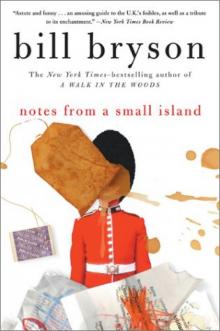 Notes from a Small Island
Notes from a Small Island A Short History of Nearly Everything
A Short History of Nearly Everything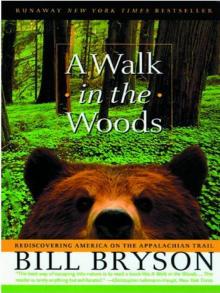 A Walk in the Woods
A Walk in the Woods I'm a Stranger Here Myself
I'm a Stranger Here Myself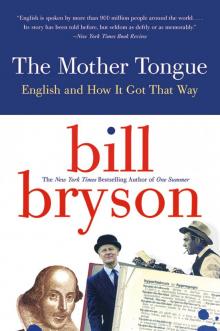 The Mother Tongue
The Mother Tongue Shakespeare
Shakespeare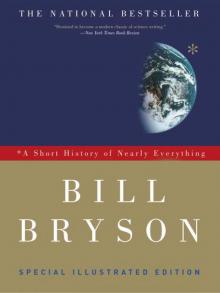 A Short History of Nearly Everything: Special Illustrated Edition
A Short History of Nearly Everything: Special Illustrated Edition The Best American Travel Writing 2016
The Best American Travel Writing 2016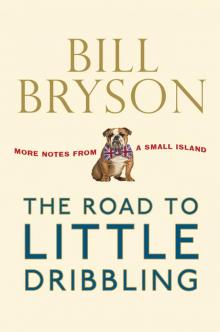 The Road to Little Dribbling
The Road to Little Dribbling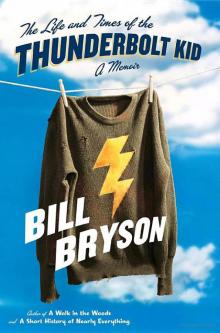 The Life And Times Of The Thunderbolt Kid: A Memoir (v5.0)
The Life And Times Of The Thunderbolt Kid: A Memoir (v5.0) Made In America
Made In America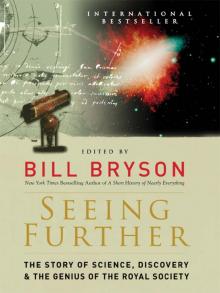 Seeing Further
Seeing Further Shakespeare: The World as Stage
Shakespeare: The World as Stage The Life and Times of the Thunderbolt Kid
The Life and Times of the Thunderbolt Kid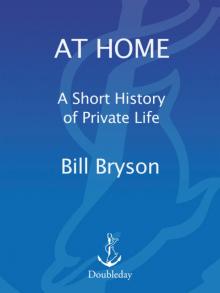 At Home
At Home Bryson's Dictionary For Writers And Editors (v5.0)
Bryson's Dictionary For Writers And Editors (v5.0) Neither Here Nor There
Neither Here Nor There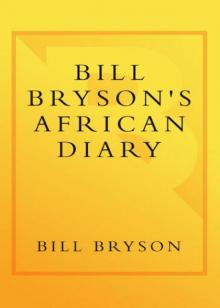 Bill Bryson's African Diary
Bill Bryson's African Diary